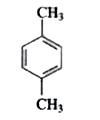A
B
C
D
Text Solution
AI Generated Solution
The correct Answer is:
Topper's Solved these Questions
CHEMICAL BONDING AND MOLECULAR STRUCTURE
CENGAGE CHEMISTRY ENGLISH|Exercise Archives Integer|2 VideosCHEMICAL BONDING AND MOLECULAR STRUCTURE
CENGAGE CHEMISTRY ENGLISH|Exercise Archives Fill In The Blanks|4 VideosCHEMICAL BONDING AND MOLECULAR STRUCTURE
CENGAGE CHEMISTRY ENGLISH|Exercise Archives Multiple Correct|10 VideosATOMIC STRUCTURE
CENGAGE CHEMISTRY ENGLISH|Exercise Concept Applicationexercise(4.3)|19 VideosCHEMICAL EQUILIBRIUM
CENGAGE CHEMISTRY ENGLISH|Exercise Subjective type|1 Videos
Similar Questions
Explore conceptually related problems
Knowledge Check
A
B
C
D
A
B
C
D
A
B
C
D
Similar Questions
Explore conceptually related problems
CENGAGE CHEMISTRY ENGLISH-CHEMICAL BONDING AND MOLECULAR STRUCTURE-Archives Single Correct
- The hybridisation of sulphur in sulphur dioxide is
01:28
|
- The bond between two indentical non-metal atoms has a pair of electron...
02:19
|
- Which of the following compounds has a zero dipole momnet ? .
02:05
|
- The species in which the central atom uses sp^(2) hybrid orbitals in i...
01:27
|
- The molecule that has linear structure is
01:45
|
- The Cl-C-Cl angle is 1,1,2,2-tetrachloroethene and tetrachloromethane ...
02:17
|
- The molecule which has pyramidal shape is
04:14
|
- Which of the following is paramagnetic ?
02:31
|
- The molecule which has zero dipole moment is
04:11
|
- The type of hybrid orbitals used by chlorine atom in ClO(2)^(-) is
02:29
|
- The maximum number of H-bonds a water molecule can form are
03:26
|
- Which one of the following molecules is planar?
01:28
|
- The number of types of bonds between two carbon atoms in calcium carbi...
01:49
|
- Among the following species, identify the isostuctural pairs NF(3). ...
01:45
|
- Polar covalent molecules exhibit dipole moment. Dipole moment is equal...
04:02
|
- CN^(Theta) and N(2) are isoelectronic But in contrast to CN^(Theta),N(...
01:39
|
- Among KO(2), KAlO(2), CaO(2) and NO(2)^(+), unpaired electrons is pres...
02:43
|
- Which one of the following compounds has sp^(2) hybridisation ? .
02:59
|
- Among the following compounds the one that is polar and has the centra...
05:24
|
- Which contains both polar and non-polar bonds ? .
02:26
|











